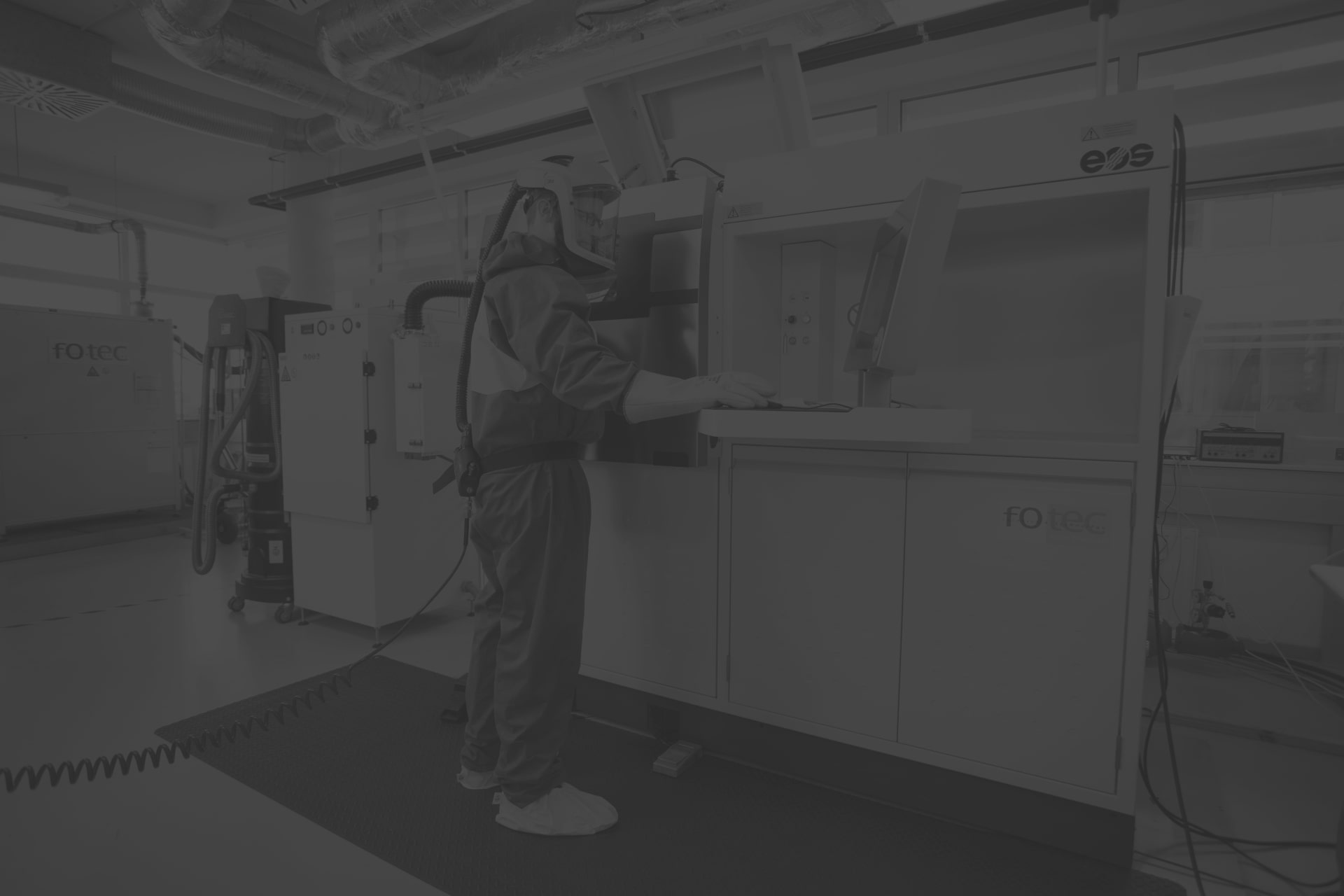 3D printing in detail
3D printing in detail
Contents
- Why 3D printing?
- From idea to component
- Materials & Technologies
- Post-processing of components
- Training
- Hirtisation
- Reverse Engineering
- Analytics
- Laboratory for additive manufacturing
Why 3D printing?
In 3D printing a desired geometry is generated by assembling volume elements layer by layer. Originally, 3D printing – also termed “additive manufacturing” – was employed exclusively for the manufacturing of simple prototypes. Meanwhile, functional components can be generated in series.
Advantages/ Technical potential:
- Highly complex components can be realized
- Design changes can be implemented quickly
- Parts can be manufactured out of materials that are difficult to machine e.g. titanium
- Functional integration
- Fusion of several components in one part
- Efficient use of raw materials
- Reduction of part weight by integration of lattice structures
Currently, the main area of application of 3D printing is still product development, but the share of series components is steadily increasing. Metal 3D printing is a promising manufacturing technology especially for the aerospace, automotive and mechanical engineering industry and for the restoration of historical equipment or vehicles.
From idea to component
Test the potential of 3D printing for your application with us. We manufacture prototypes on demand, but are also happy to assist you as partner in R&D projects in the field of 3D printing. If you are interested, we also support you in applying for funding for your project.
Materials & Technologies
The following additive manufacturing technologies and materials are available at FOTEC:
- Selective laser sintering (SLS) – PA12 & Alumide (PA12 + 20 % Al)
- Laser beam melting (LBM) – AlSi10Mg, Ti6Al4V (ISO5832-3), Hastelloy X (UNS N06002), Stainless Steel PH1 (1.4540) und Maraging Steel MS1 (1.2709, 18Ni300)
- Fused filament fabrication (FFF bzw. FDM) – PLA, PET, ABS
- Stereolithography (SLA) – Acrylate-based photopolymer
Post-processing of components
Of course, FOTEC's Laboratory of Manufacturing Innovation (LMI) also comprises the required infrastructure for mechanical machining, heat treatment and cleaning of 3D-printed components.
Training
Gain insights into 3D printing technologies and discover their potential for your company. We offer customized trainings & consulting as well as basic seminars in cooperation with WIFI and the Federal State of Lower Austria.
Hirtisation
Hirtisation is a novel electrochemical technology for the automated post-processing of 3D-printed metal components, which strongly facilitates the removal of support structures and adhering metal powder. Test the technology at our lab – if you like, also with components additively manufactured by you.
Reverse Engineering
By reverse engineering, a digital copy of an existing component is created using 3D measurement technology. The component is measured tactilely and optically for this purpose. Hereafter, the created model can be processed digitally or duplicated with a 3D printing system. This method is usually chosen if neither technical drawings nor CAD data are available for a component and a replacement component has to be manufactured, for instance.
Analytics
Our lab equipment also includes instruments for analyzing humidity, shape and size distribution of metal and polymer powders for additive manufacturing. Moreover, we have devices for the 3D measurement of components and for the optical characterization of surface roughness at our disposal.
Laboratory for additive manufacturing
The following equipment is available at FOTEC:
- EOS-M280 laser beam melting system for metals
- EOS-M400 laser beam melting system for metals
- Eplus3D EP-M150Pro laser beam melting system for metals
- INCUS Hammer Lab35 for lithography-based manufacturing (LMM) of metal parts
- RENA H3000 for electrochemical post-treatment of 3D printed metal parts
- EOS P396 laser sintering system for plastics
- Prusa i3 MK3 filament-based printer with multi-material upgrade
- Ultimaker S5 filament-based printer
- Horiba-LA-950 laser diffractometer
- Carbolite-Gero-GLO-210-11 heat treatment furnace
- Memmert UF450plus convection furnace
- Convection furnace Heraeus UT6060
- Tube sintering furnace Nabertherm Gero HTRH
- Air sintering furnace Linn High Therm VMK-1800
- Alicona Infinite Focus SL surface profilometer
- Hitachi TM-1000-REM
- Various CAx tools (design & simulation-based topology optimization)
- FARO Quantum-M 3D scanner
- Mechanical workshop
